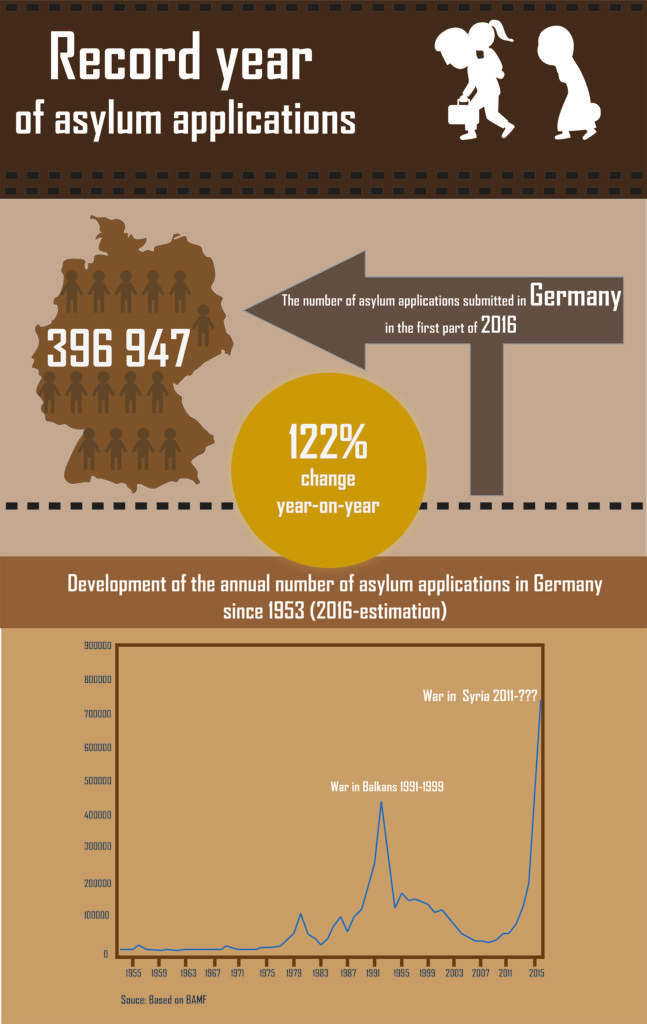In the first half of 2016, 396,947 asylum applications were submitted to the German Federal Office for Migration and Refugees. This is nearly 122% more than one year before. Most of the applicants came to Germany in the second half of 2015 after Angela Merkel’s invitation. This year, 222 thousand arrivals of asylum seekers have been registered so far, according to the Bundesministerium des Innern1)396.947 Asylanträge im ersten Halbjahr 2016, Source: BMI 2016-07-08; some of 150 thousand have come from Syria, Iraq or Afghanistan (68%).
In terms of asylum applications, 2016 will be the historical year for Germany. So far, it is 2015 that the highest number of applications was submitted (477 thousand), which is even more than the previous record of 1992, when 438 thousand people applied for asylum in Germany (at the beginning of the war in Balkans after the Yugoslavia collapse). If the number of applications does not slow down (1,1 million people came to Germany in 2015), the number of asylum applications submitted may surpass 800 thousand in 2016.
After the 2015 unprecedented refugees influx, German Bundesbank projected in December 2015 a further 900,000 refugees for 2016, and 700,000 for 20172)Outlook for the German economy – macroeconomic projections for 2016 and 2017, Source: Bundesbank December 2015. However, because of the tightening of the asylum rules, the influx of refugees should shrink to 500,000 yearly up to 20203)Germany toughens asylum rules, row over migration forecast, Source: Reuters 2016-02-05. That means theoretically 3,6 mln of refugees in the years 2015-2020, while in the years 1953-2014 (which is 61 years long) 4,6 mln of refugees applied in Germany for asylum.
The problem is that tightening the rules does not mean that people will not come to the country. Many of these whose applications will be rejected, will stay in the country and reinforce the gray area and many have and will come without applying (eg. those who got the asylum in countries like Poland and decided to flee to Germany). Their integration will be impossible and in a few years Germany will face ethnic and religious conflicts of uncontrolled masses on a large scale, similar to those we can see in the USA or South Africa.
References
| 1. | ↑ | 396.947 Asylanträge im ersten Halbjahr 2016, Source: BMI 2016-07-08 |
| 2. | ↑ | Outlook for the German economy – macroeconomic projections for 2016 and 2017, Source: Bundesbank December 2015 |
| 3. | ↑ | Germany toughens asylum rules, row over migration forecast, Source: Reuters 2016-02-05 |




